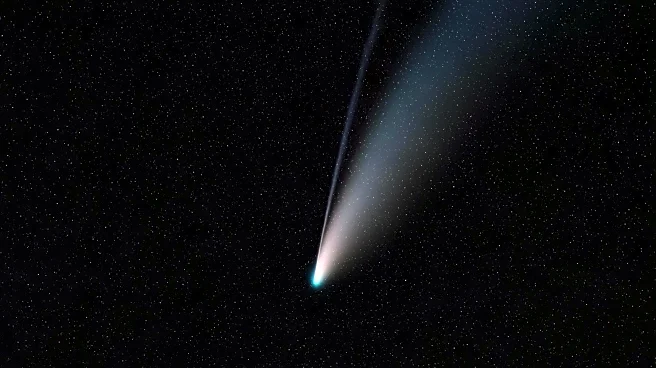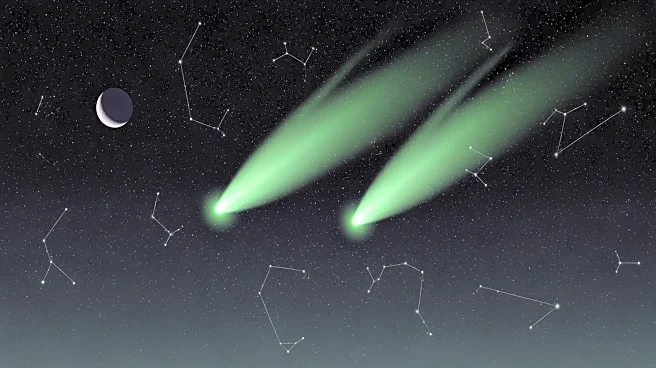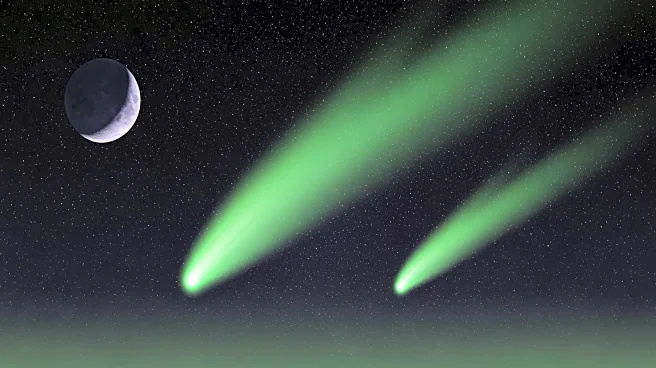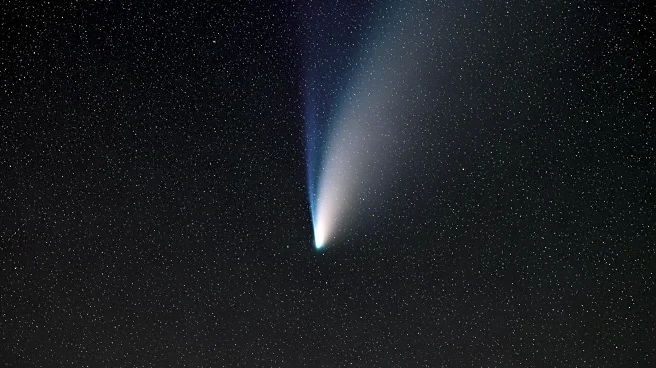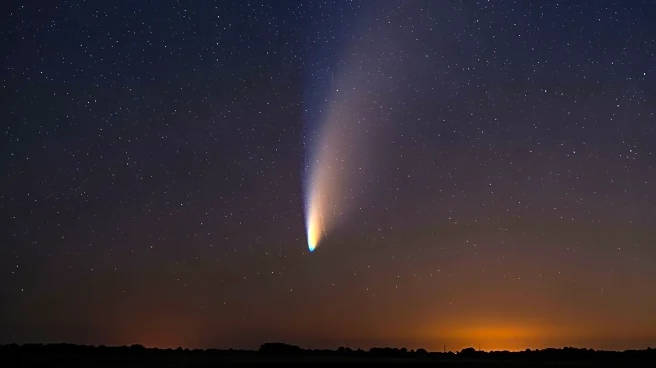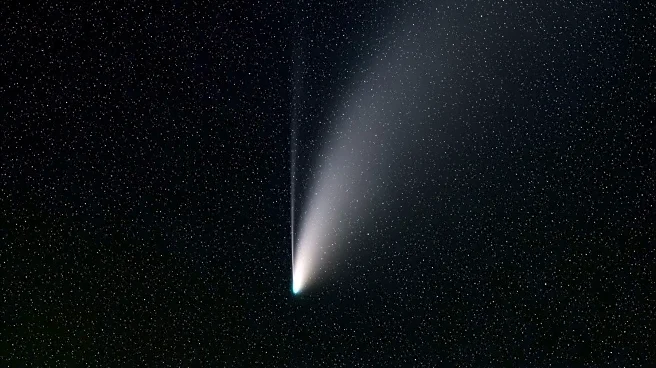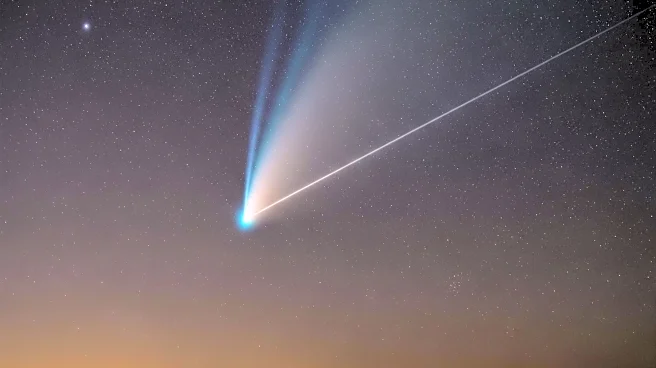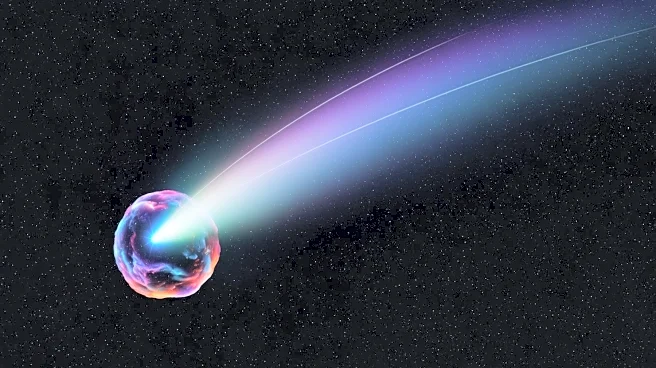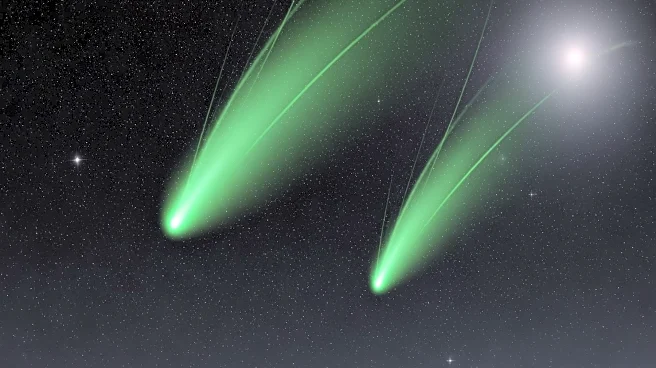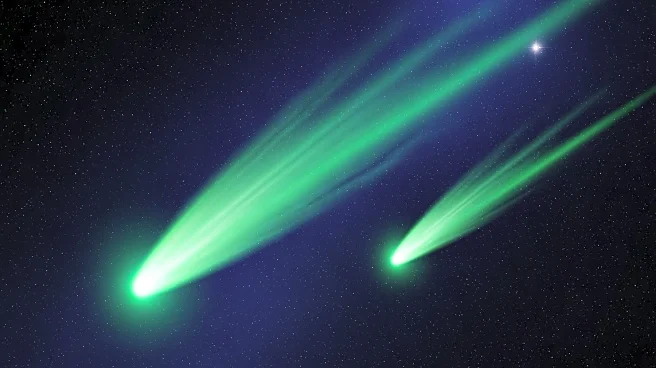What's Happening?
Comet Lemmon, officially named C/2025 A6, is set to make its closest approach to Earth in late October 2025. Discovered on January 3, 2025, the comet is traveling at speeds of up to 130,000 mph and is currently visible in the pre-dawn sky. It features
a brilliant green coma and a long tail composed of gas and dust, with the green color attributed to diatomic carbon molecules. The best viewing period is expected to be from October 22 to 28, during the new moon, when the night sky is darkest. Stargazers are advised to look for the comet away from city lights, and while it may be visible to the naked eye, binoculars or a small telescope will enhance the view.
Why It's Important?
The appearance of Comet Lemmon is significant as it offers a rare opportunity for skywatchers to observe a celestial event that occurs once in a lifetime. Comets like Lemmon, originating from the Oort Cloud, are infrequent visitors to the inner solar system. This event provides a chance for scientific observation and public engagement with astronomy. The comet's visibility could inspire interest in space science and education, as well as provide data for astronomers studying the composition and behavior of comets.
What's Next?
After its closest approach to Earth, Comet Lemmon will continue its journey toward the Sun, reaching its closest point on November 8, 2025. During this time, its nucleus will release more gas and dust, brightening its coma and tail. However, the Sun's glare will make it difficult to observe from Earth. Following its solar orbit, the comet will head back toward the outer solar system, not to return for approximately 1,150 years.
Beyond the Headlines
Comet Lemmon's appearance highlights the dynamic nature of our solar system and the ongoing exploration of celestial phenomena. It underscores the importance of continued investment in space observation technologies and the role of amateur astronomers in contributing to scientific discoveries.
